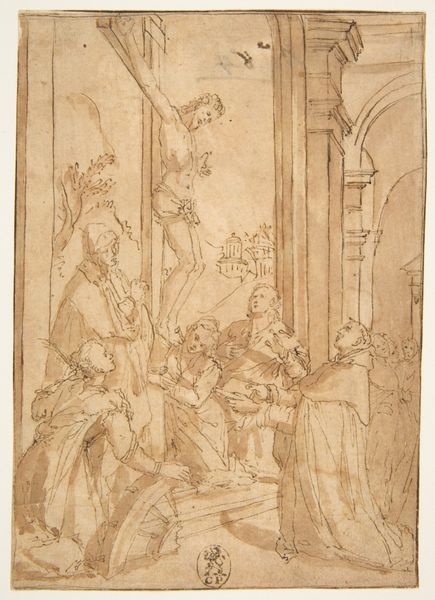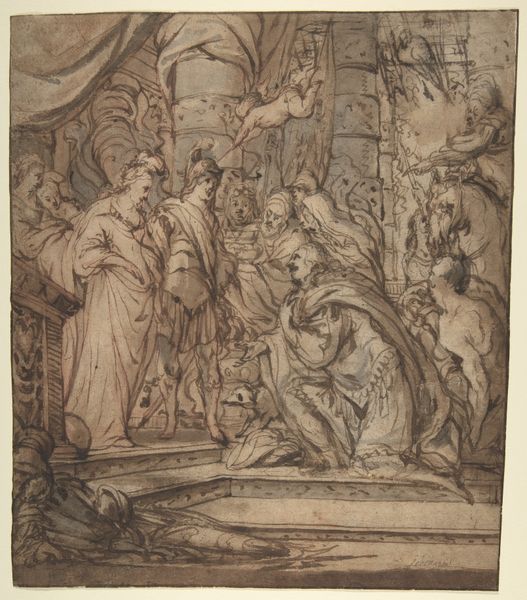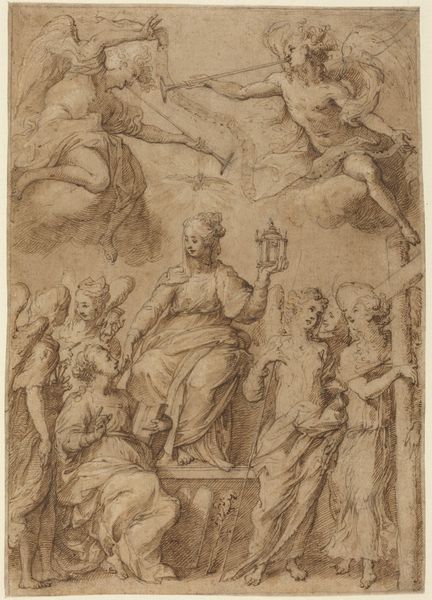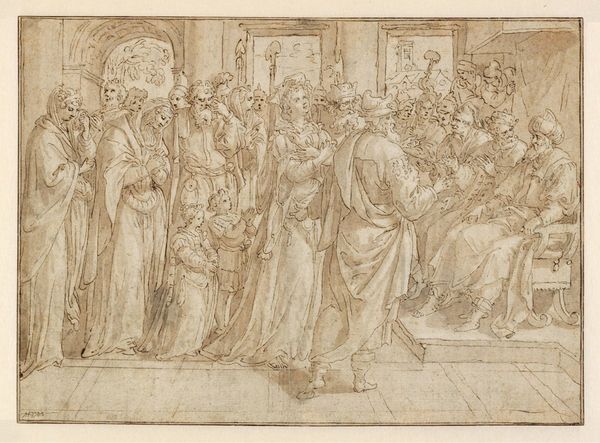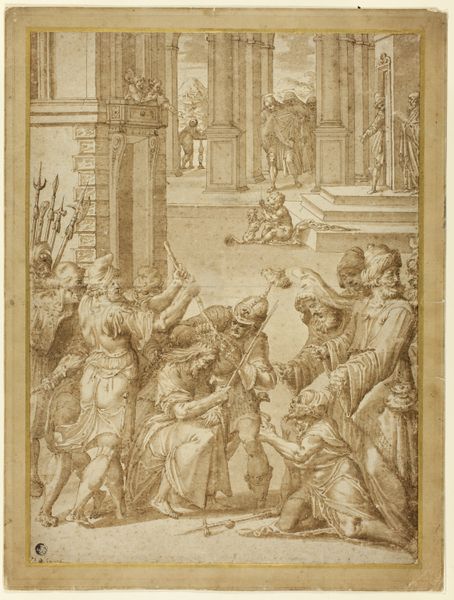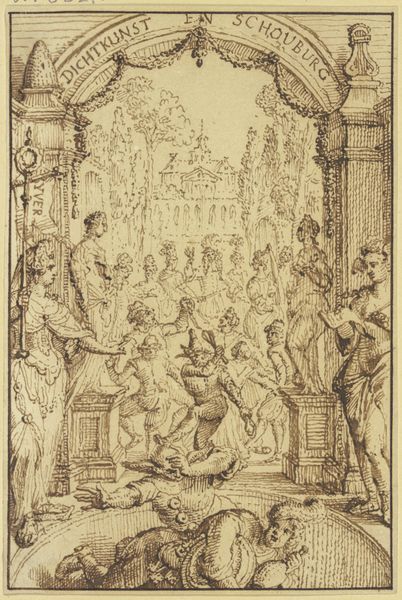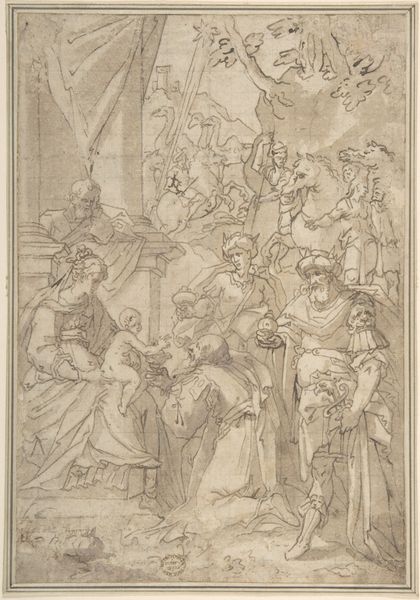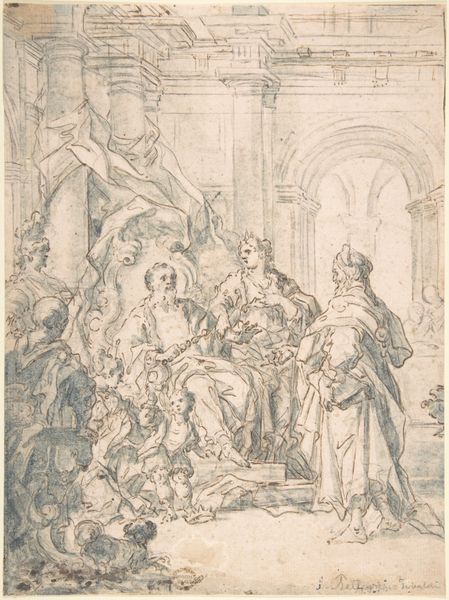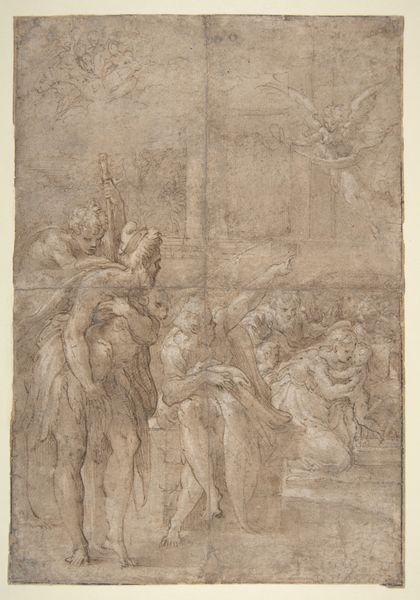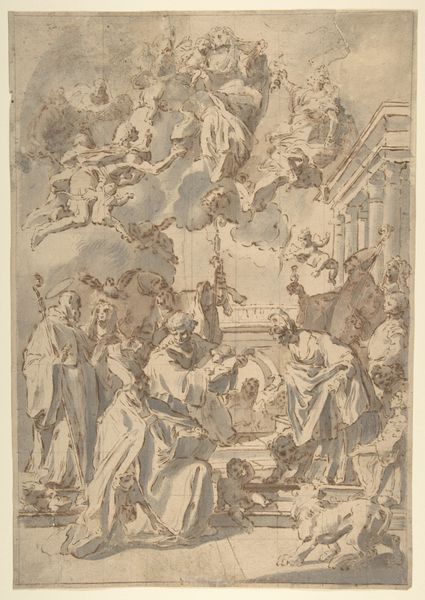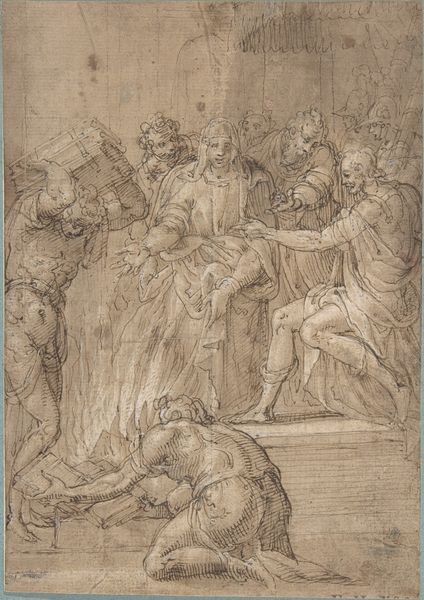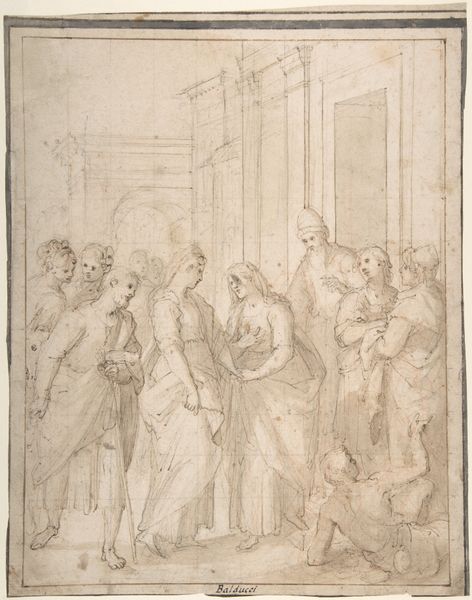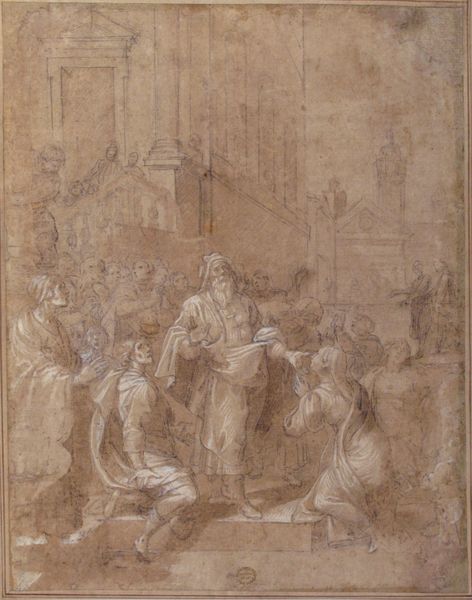
S. Giovanni Alberti Fiorentinos historie. De af bispen af Firenze udsendte soldater overfalder det kloster, hvori de tror, at Giovanni Alberti er(?) 1523 - 1605
0:00
0:00
drawing, paper, ink
#
drawing
#
narrative-art
#
charcoal drawing
#
mannerism
#
paper
#
ink
#
pencil drawing
#
history-painting
Dimensions: 202 mm (height) x 142 mm (width) (bladmaal)
Editor: This ink and charcoal drawing on paper, titled "S. Giovanni Alberti Fiorentinos historie..." by Jan van der Straet, was made sometime between 1523 and 1605. There's a palpable tension in the scene. What story do you think the artist is trying to tell us? Curator: Notice how van der Straet renders the materiality of conflict here. The artist presents this scene through the very tactile medium of ink, charcoal, and paper, tools purchased, handled, manipulated, and shaped with purpose. Considering the labor required to produce an image of such violence, how does this impact our understanding of the social and political implications depicted within it? Is this valorizing conflict through display or highlighting the disturbing implications of historical narratives on display? Editor: That's fascinating. I hadn’t considered the labor involved in creating this drawing and how that plays into its meaning. But, do you think it's a critique or simply a recounting of history? Curator: Consider the use of paper itself: a valuable commodity during the Mannerist era, and the means by which information and ideas were disseminated. What implications might its accessibility hold in understanding the narratives presented? Editor: So the act of creating this drawing becomes a form of cultural consumption and dissemination of particular narratives. Is it also pointing out how historical events become commodified? Curator: Precisely. Van der Straet’s choices highlight how narratives are not merely depicted but are produced, circulated, and consumed within specific material and social contexts. Considering it a historical artwork brings awareness to both then and how it stands in a present day context as an accessible commodity to learn about history, adding levels of material accessibility. Editor: It makes you think about the power structures that determine which stories get told and how they are presented. Thanks for highlighting these social production aspects of art.
Comments
No comments
Be the first to comment and join the conversation on the ultimate creative platform.
